The First Artwork Made in Outer Space
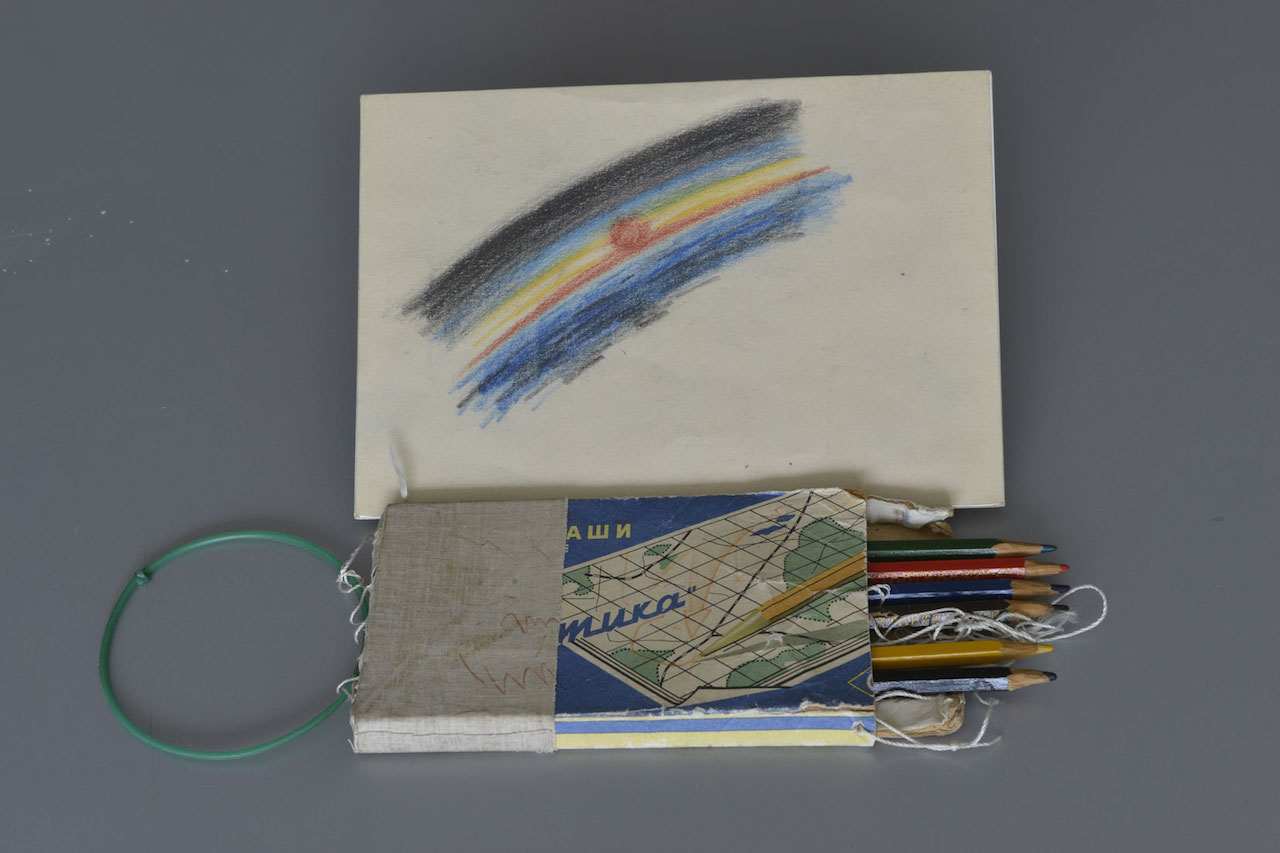
Taktika
pencils used by Alexei Leonov on board Voskhod 2 (1965), and the first
drawing created in space (© Museum of the Yuri Gagarin Cosmonaut
Training Centre)
That drawing, the pencils, and a painting he later made back on Earth are on view in the Cosmonauts: Birth of the Space Age exhibition at the Science Museum in London. Cosmonauts is an impressive exhibition not just in evoking the scientific and cultural influence of the Soviet space program, which until the American Apollo 11 moon landing led the world in space exploration, but in revealing many objects never even exhibited in Russia. For example, the LK-3 lunar lander was declassified for the occasion, part of a secretive Soviet plan for a moon landing only disclosed in 1989. Leonov was intended to be the Soviets’ first man on the moon until the program collapsed due to organizational issues and a lack of funding.

Alexei Leonov, “Over the Black Sea” (1973) (© The Memorial Museum of Cosmonautics)
As he told the Guardian’s Observer on the occasion of the spacewalk’s 50th anniversary this year:
I was surrounded by stars and was floating without much control. I will never forget the moment. I also felt an incredible sense of responsibility. Of course, I did not know that I was about to experience the most difficult moments of my life — getting back into the capsule.With no other choice, he opened a valve to deflate his suit, and decompression sickness began to set in, but he managed to squeeze through the air lock just before they orbited into the inky shadow of the Earth. Hours later when the cosmonauts got the oxygen levels steady in the capsule, the two men found their automatic entry wasn’t working and had to manually fire the rockets to blast back through the atmosphere, barely escaping a communications cable that was caught on the spacecraft.
When they finally landed in a remote corner of the Siberian wilderness, it took two days for rescue to arrive. Sometime between the spacewalk and that harrowing return to Earth, Leonov drew the orbital sunrise with a subtle variation of color not captured by the rudimentary onboard cameras.
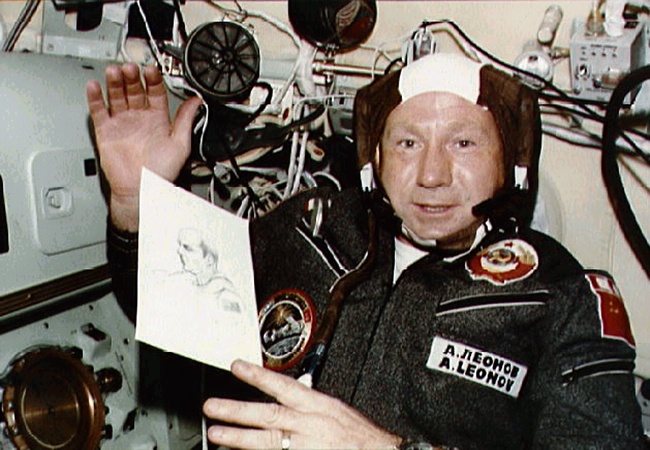
Alexei Leonov with a sketch of American astronaut Thomas Stafford during the Apollo-Soyuz mission (via NASA)
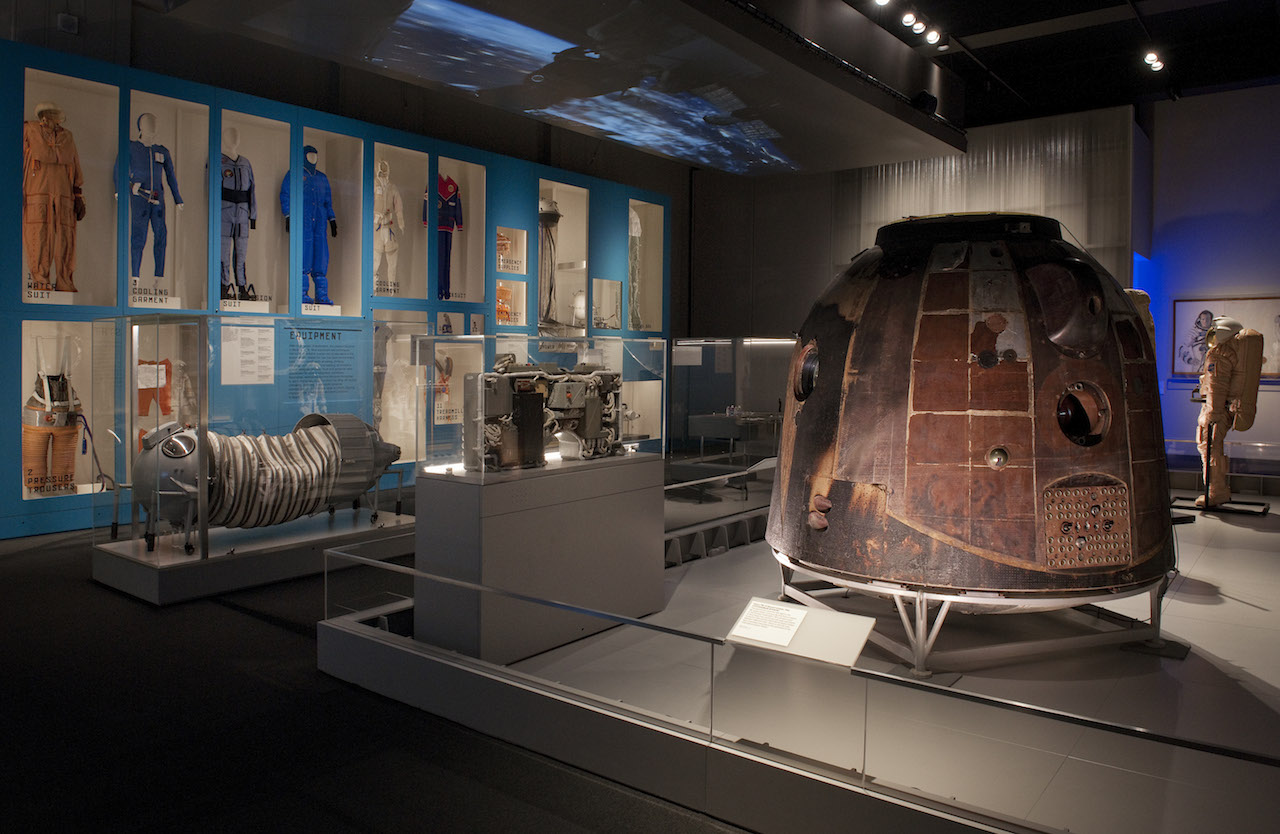
The Soyuz TM-14 descent module and the Outposts in the ‘Cosmonauts’ exhibition (courtesy Science Museum)
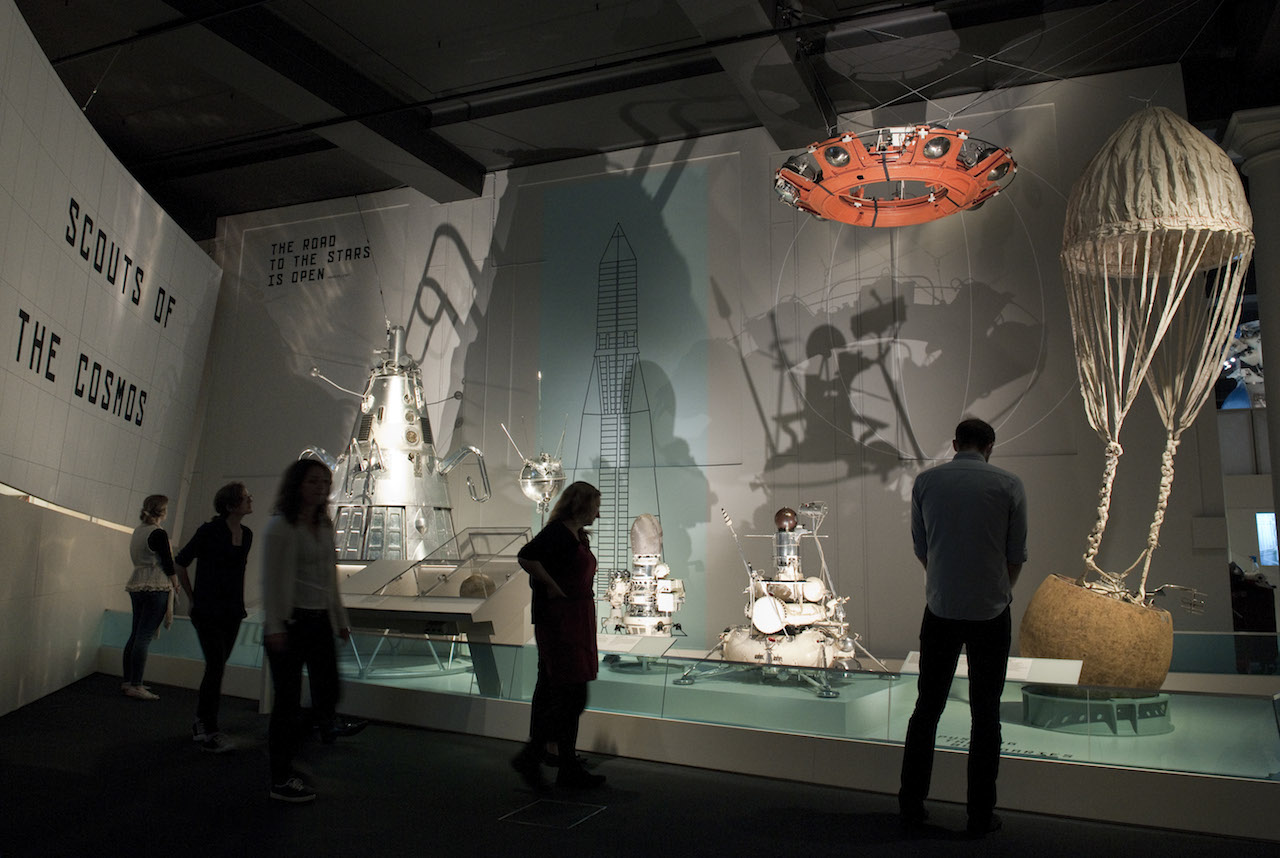
Engineering models from Soviet robotic missions in the ‘Cosmonauts’ exhibition (courtesy Science Museum)

LK-3 lunar lander in the ‘Cosmonauts’ exhibition (courtesy Science Museum)

Sputnik 1 satellites (Engineering and display models) in the ‘Cosmonauts’ exhibition (courtesy Science Museum)
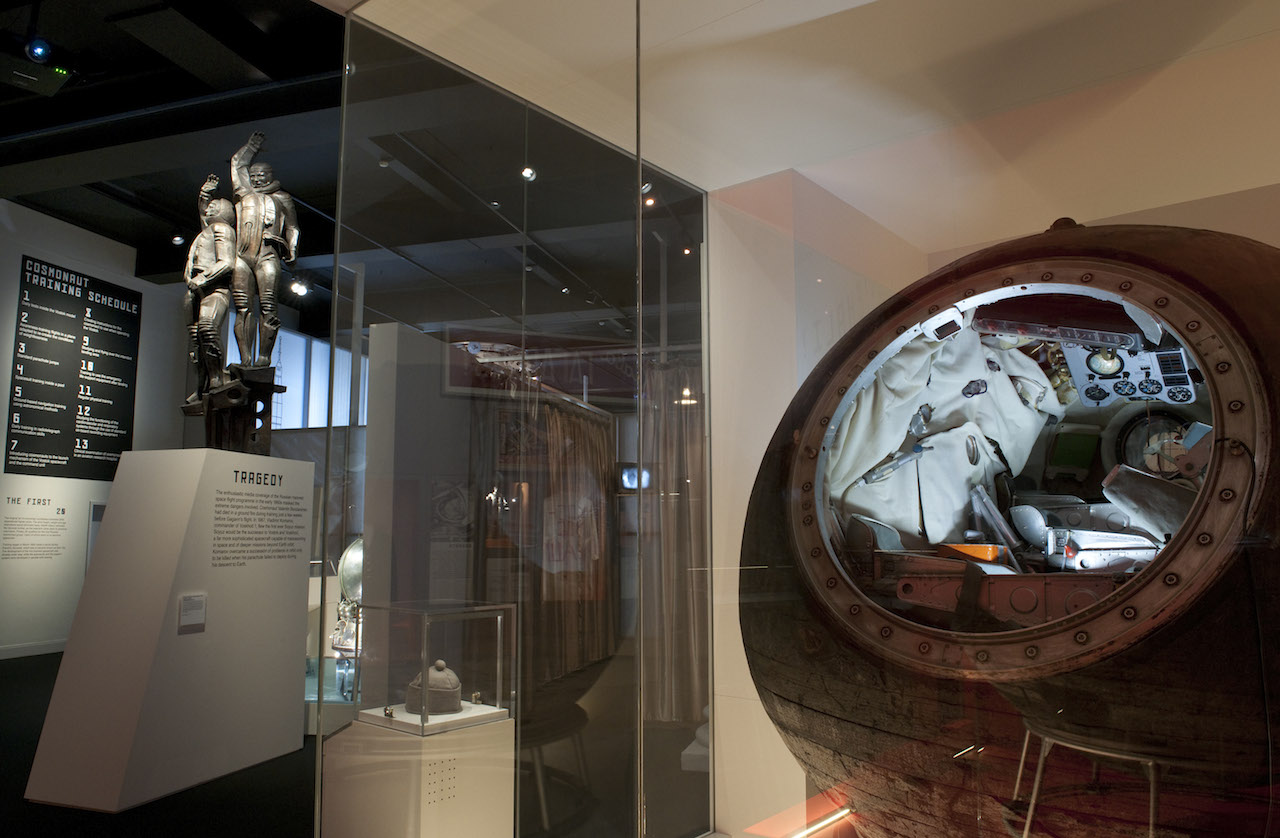
Voskhod 1 descent module in the ‘Cosmonauts’ exhibition (courtesy Science Museum)
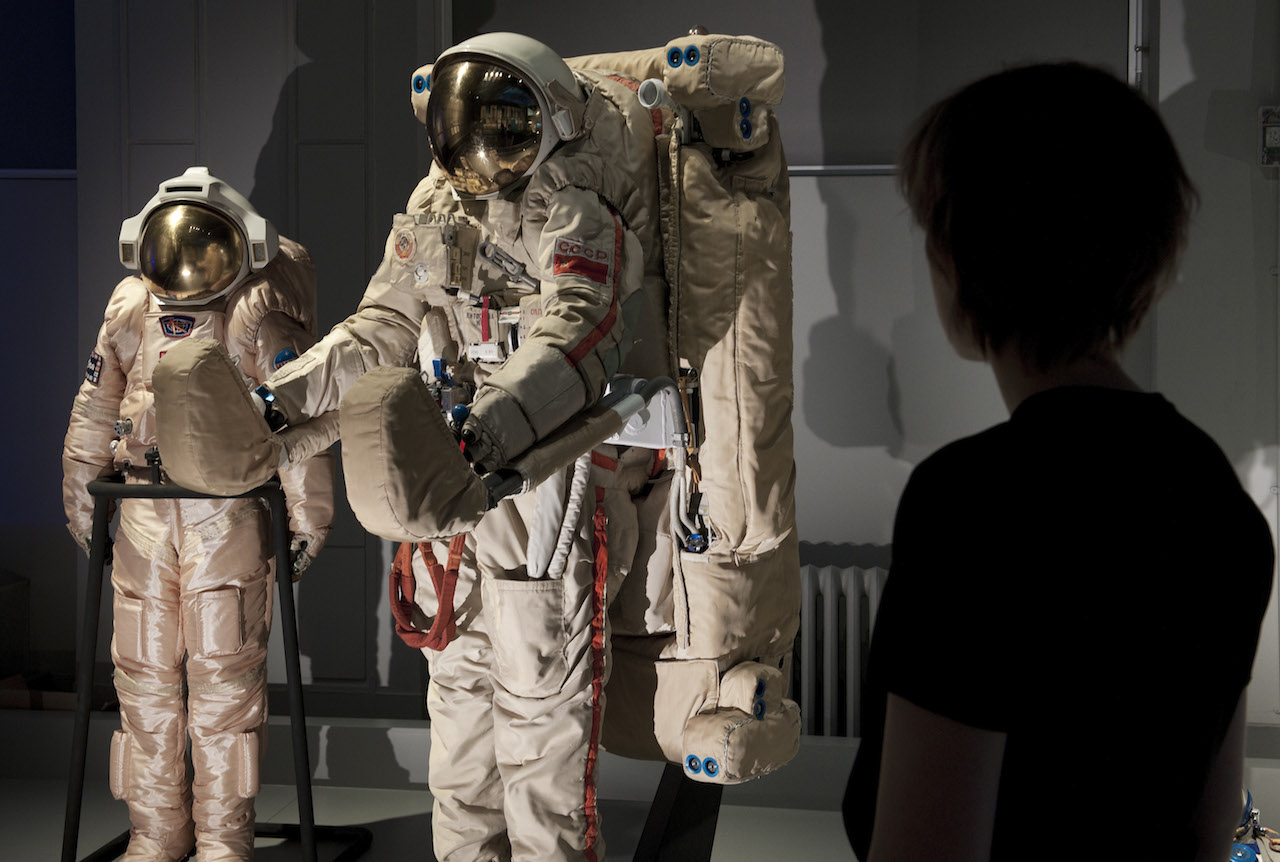
Orlan DMA-18 extravehicular activity spacesuit in the ‘Cosmonauts’ exhibition (courtesy Science Museum)
South Kensington, London) through March 13, 2016.

Δεν υπάρχουν σχόλια:
Δημοσίευση σχολίου